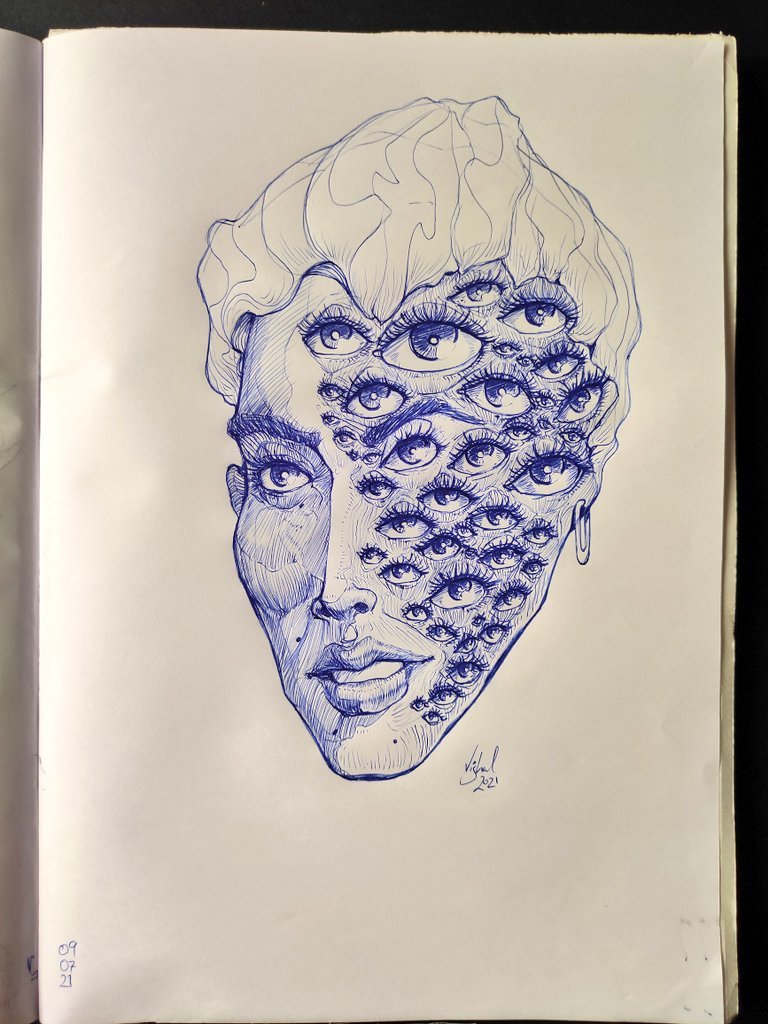It is a truth universally acknowledged, by many a creative person, that expensive notebooks are traps. The beauty of them, the craft involved in making them, is not in question. But it is their very beauty and craft that makes a creative person pause, hesitate, worry, over what goes in it, be it scribble or screed. And that’s where the cheap sketchbook wins.

I’ve figured out a way to both satiate my greed for expensive books, and thwart said hesitation. I’m sad to say it isn’t an economical solution, but it’s a solution nonetheless:
I use them all.
At the current moment, I have around a dozen sketchbooks ‘in progress.’ There’s a tiny A6 one for fineliner landscapes called Pocket Spaces that has five or six pages in it. It’s a natural companion to Pocket Faces, a similarly diminutive hardbound for portraits of women, that completed earlier this year, and has now spawned an A5 sequel that I’ve been dawdling on because who likes to draw men?
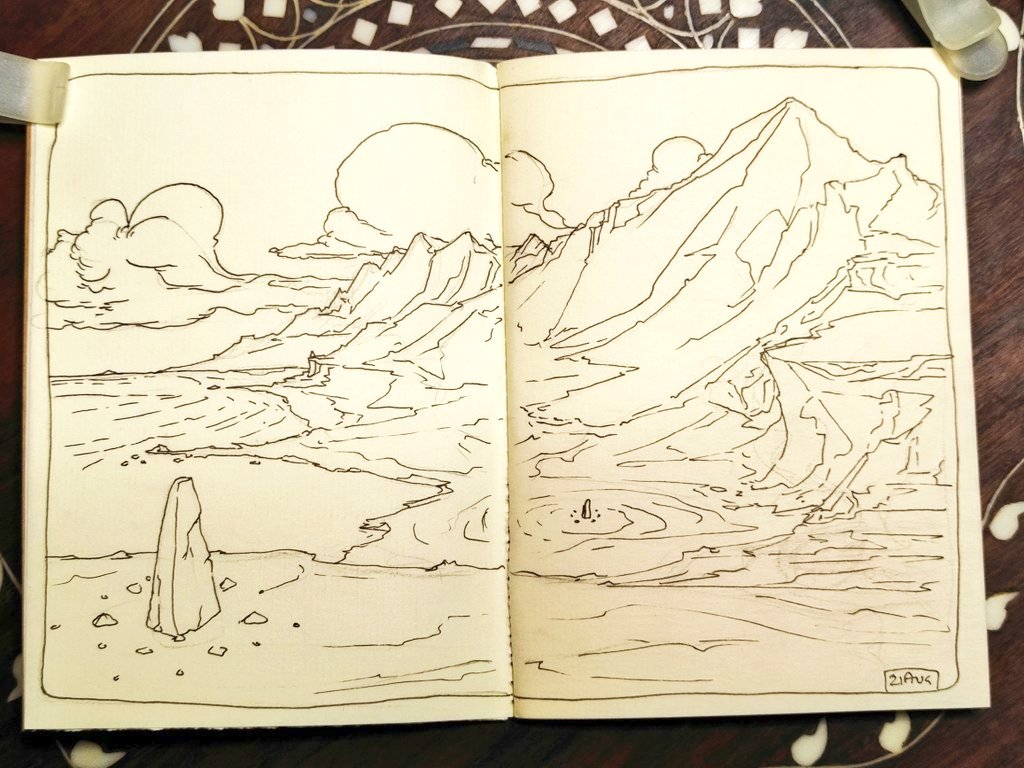
Some of these have run for three or four years, with gaps as wide as a year sometimes. I’ve stopped considering them abandoned. They simply exist, either to remain with a few blank pages, or be filled in later. There are bigger books, all the way up to A3, in various paper stocks and bindings, some odd ones like grey and sepia. I have ideas for what to do with them, themes and general notions to explore. I’ve also become fairly tool agnostic, so when I find a paper that can take a bunch of different things, then a bunch of different things go on it, and when I find that it likes a certain pen or pencil better than others, that becomes a partnership.
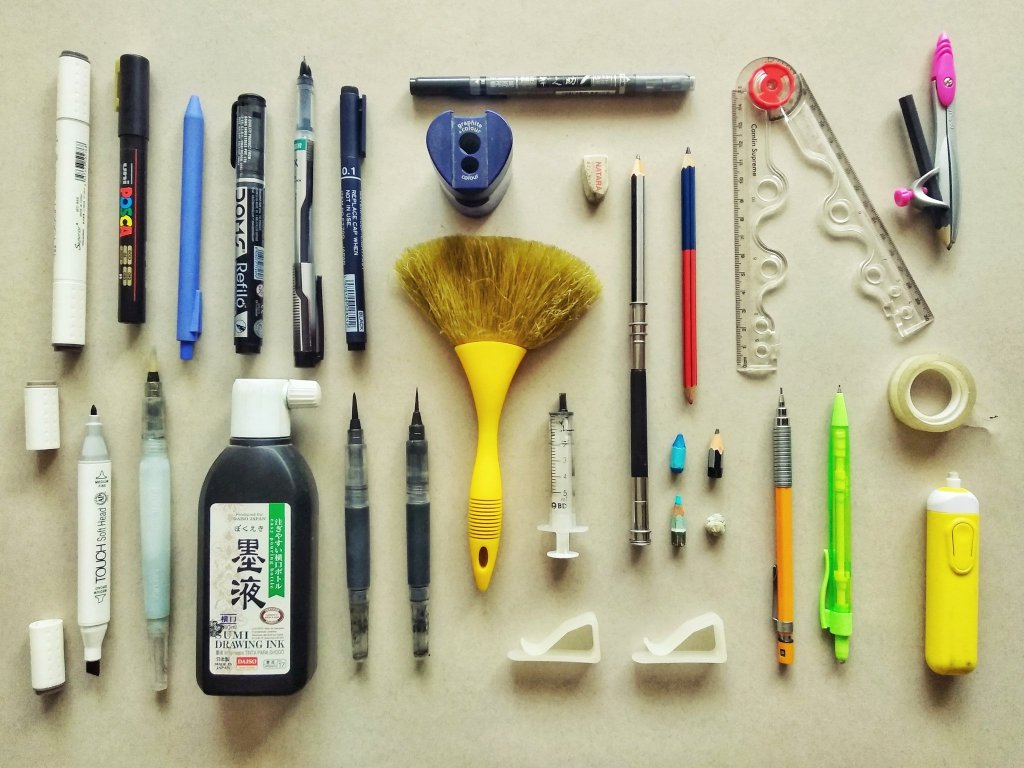
So the dance goes. I tried to keep a single sketchbook going (I think the last time was 2016) but it never really satisfied me, and I’d long to have them be finished so I could finally start using the good sketchbooks I’d been saving.
That, too, was a trap.
The good sketchbooks were never used, and queue-barging their way in was a succession of cheap ones.
It was Practice Makes Progress that changed things.
It was also an impulse buy, but a cheap one. The paper was finely chequered, smooth, thin, prone to smearing graphite and pen alike. I took to filling it at first with anatomy and lighting studies, then as a safe and low-tension place to loosen up. The book was initially called Practice Makes Perfect, but as things, er, progressed, that title became more ill-fitting. The three-and-a-half years it spanned were a time of great change in my life. I moved back to India after a lifetime in Muscat & Dubai. I worked on my first large illustration project. I spent a year on my cousins’ sofa bed, and then moved into an apartment that needed to be renovated, draining our savings. Samir & I restarted our careers practically from scratch in a city we ostensibly called home, but didn’t really give two shits about us and our work.
We were immensely lucky that a couple of kind souls took a chance on us and gave us work.
By no means rich, but given our Dubai track record of going years without fruitful work, scraping the bottoms of our bank accounts every month to pay bills, we managed to keep our sanity and the lights on.
Living out of suitcases and backpacks in its initial years, Practice Makes Progress became the de facto place for everything that couldn’t go into something more polished. Warm-up squiggles? In there. Working out some thumbnails for an illustration? There. Stupid joke? Yes.
I had a nicer, less-beat-up looking notebook that went into meetings with me, and in that are the aspirations and furtive notes for many creative things, but into the cheap and rough sketchbook, went the foundations of things that were to rewire me.
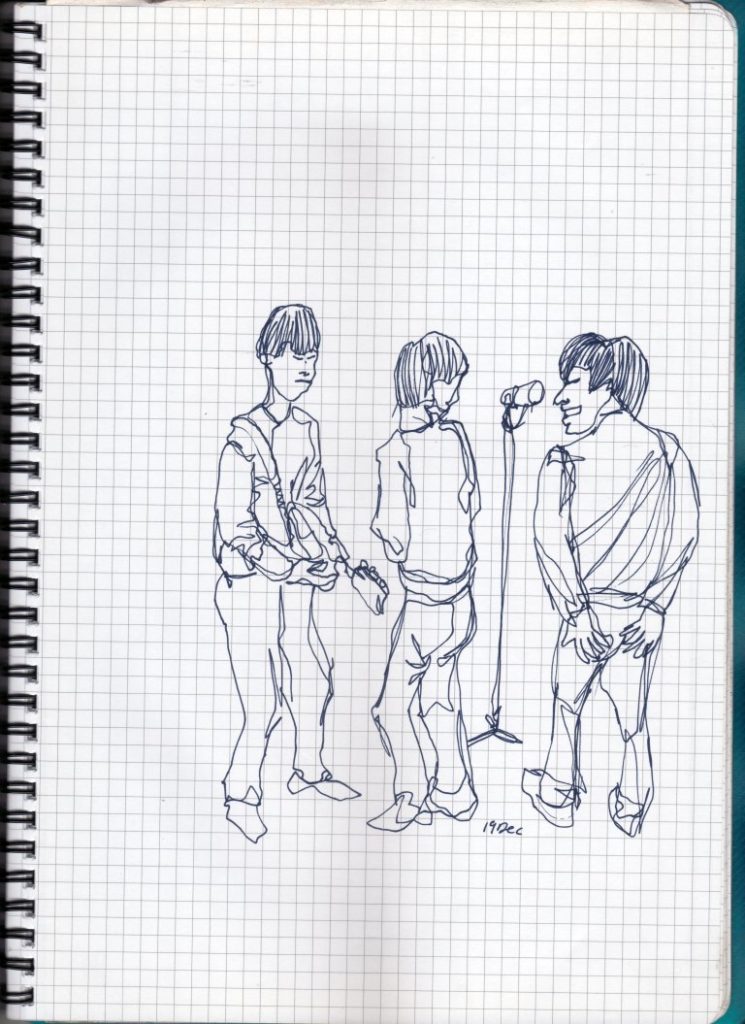
I’ve always been an advocate of creativity as play as much as monkish rigour, the former moreso, and to have a playground with limitations was instructive as well as freeing. I started out drawing on both sides of the page, but around halfway, as I was in-parallel gaining confidence and skill in digital colour process, realised that some of the idle doodles could have a life beyond, and while I could redraw them on clean paper, something of the energy of the moment would be lost, and was now muddied by the show-through of the previous page. So now all my sketchbooks are single side or, if in spreads, with blanks left in. The thin paper meant that pen would often bleed through, so I took to keeping a backing sheet. I do that on every book now, even the ones just for taking notes in boring client meetings (they also double as bookmarks).
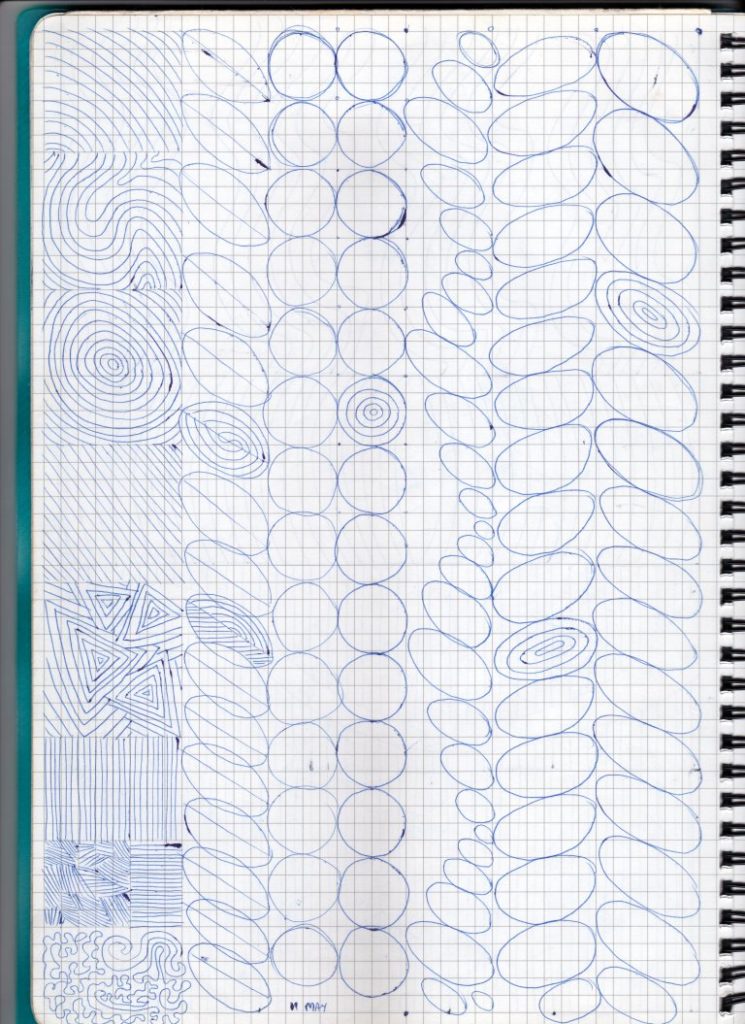
By late 2018, we had moved to the apartment. Armed with a bit of spare cash and discovering just how much could be delivered home, I started amassing a few expensive* sketchbooks. The A3 ones were first, since now I didn’t need to fit everything (including my laptop) into my backpack. Grand plans were made for Inktober and whatnot, and while the acreage of A3 is something I love, it’s not a great thing to work a daily deadline on. That book, Orcs vs Inks, is still in progress, but that’s a story for another day.
*(Everything is relative. Growing up in the Gulf in the 90s most art paper was imported, top-brand, and prohibitively expensive. Towards the 2010s with the anomalies of international trade I discovered that some supermarkets had reliable 200gsm art paper, but the Goldilocks zone of good paper + cheap sketchbooks was elusive. Overall though, stationery of every kind has dropped sharply in price in the past decade.)
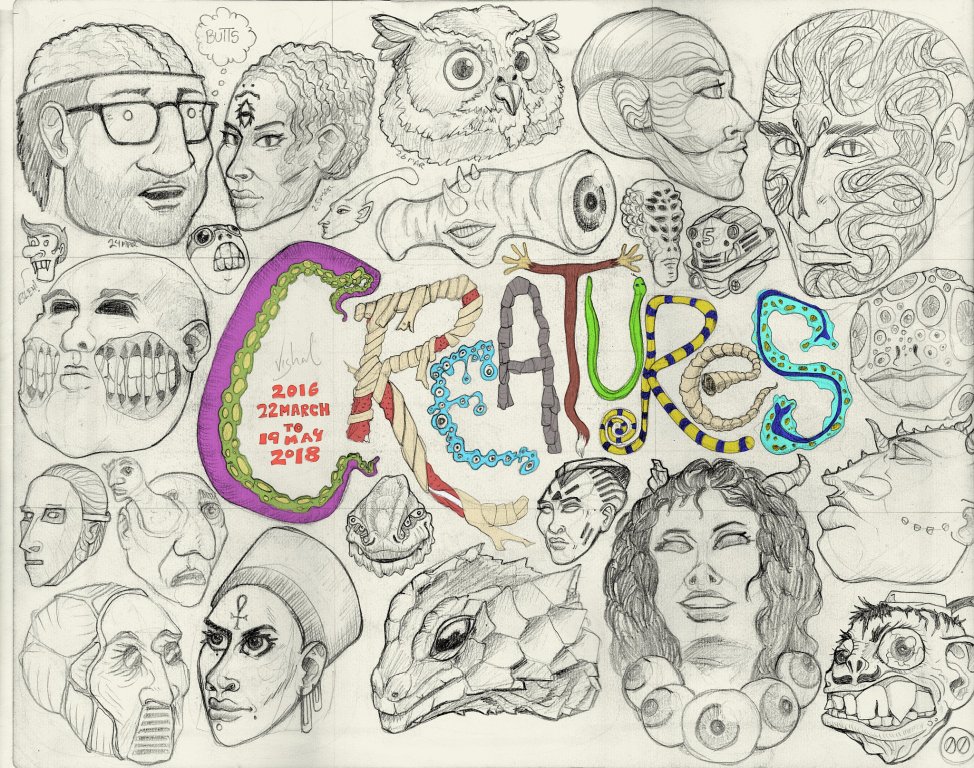
But I’d learned through the preceding years that there was just something about the cheap ones. Alongside Practice Makes Progress was another cheap book, less rough but often as freeing. Creatures was a ₹40 art pad without even a card backing, the kind I’d have bought back in my school days for the weekly double period of what passes for a reluctantly-proffered art education in India. It was the only drawing paper of some quality at a tiny local stationery store when I needed some for a product design project, and I discovered that, while waxy and striated, it took well to pencils, punching way above its budget price, so I bought a couple and dedicated it to pencils, and little monsters. I filled the first page with a bit of planning, dropping in random sizes of ovals around an illustrated wordmark. I have a tendency to misjudge and therefore spill over the edges of pages, else awkwardly shove anatomy into frame, so this loose set of borders at the start was a good solution.
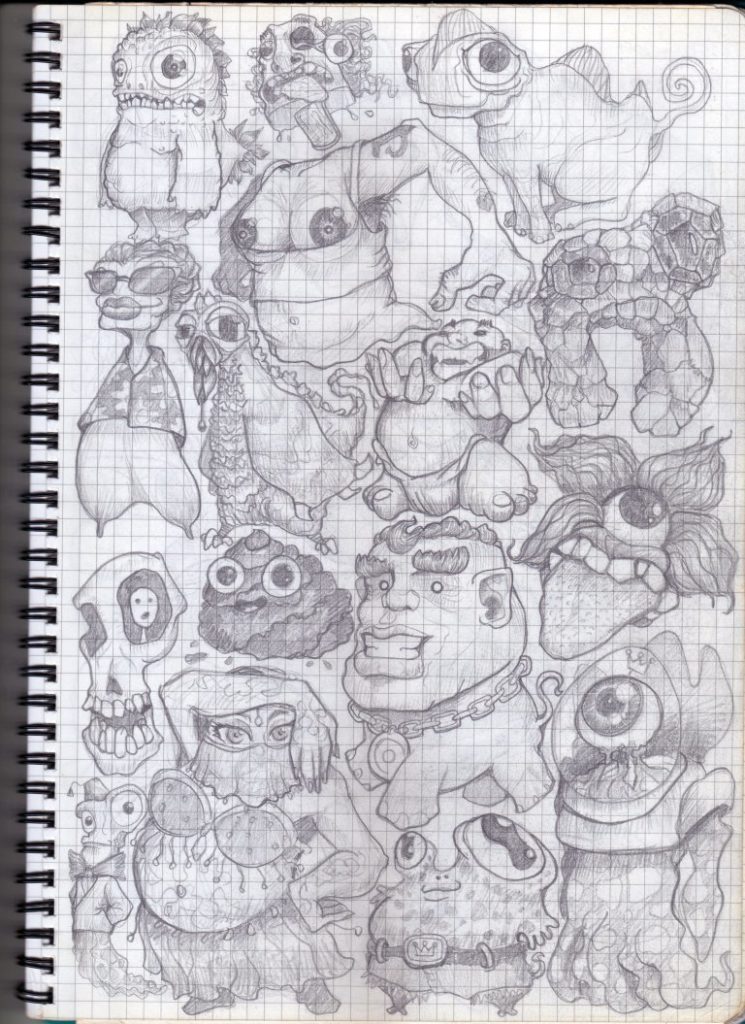
This had unexpected positive side effects. First, it had a profound effect on the terror of staring at a blank page. Carving it out into a bunch of blobs at the start helped me get over more than the cramming, it allowed me to break down pages into manageable chunks. I didn’t have to nail every single drawing on the page. Creatures and Practice… informed each other too. With Creatures having a tighter mandate, ideation within that gamut became easier. On Practice… I started a page one day thinking I’d stretch my hand with some curves, but it mutated into a craggy blob in the middle of the page. I liked the shape. I started to see shapes within it. Quickly filling the page with other stream-of-consciousness craggy blobs, I ended up with a page that, like clouds, I could discern creatures in. So began a new kind of practice for me, of starting wide and finishing with focus. I brought the craggy blob system over to Creatures. There, it mutated further into themed pages, that I’d scribble in the corners. Merfolk, and Pegasus Centaurs, and Aliens staring at their phones.
I’d never dare commit such silliness on an expensive book.

I found out as much when both Creatures and Practice Makes Progress filled up, and I stared at my now-considerable sketchbooks, cheap and expensive, and asked myself: what next?
I knew that monthly projects like Inktober were better suited to loose sheets of paper. I’d managed to grow my cartooning skills in 2019 using a lot of the methods I employed in Creatures and applying them to drawing 120 Knights. So what to do with all of these wonderful things, each a potential goldmine of work, of fun?
I picked a book for Creatures 2, and one for continuing the craggy blob work, in a book dubbed Shape Shipfta. I proceeded to add very little to either. They weren’t the most expensive books I had, but they certainly weren’t the cheap stuff. And so I fell back into The Trap.

Elsewhere, however, there was a cheap book in play. Two Terrible Pages had started out as a way to apply the sketchbook methods to writing. Long-time readers of this site know just how much of a running joke that is (now entering its third decade!), but I gave it a few shots, picked a cheap fountain pen for it, and kept at it.

I found myself picking up the book for doing warm-up squiggles in as well, and soon it became this mish-mash of words, figures and scrawled lines. It became, once again, my Cheap Sketchbook, and by now I knew that it was always good to have one.
When March 2021 rolled around and #36DaysOfType showed up, I did not pick out a fresh sheaf of A4 drawing paper like I would have. Giving myself the permission to get bored with it, fail, and move on at some point, I folded the basic drawing of each character into my squiggly warm-ups, often done at a little coffee table with a ballpoint pen.
I finished #36DaysOfType.
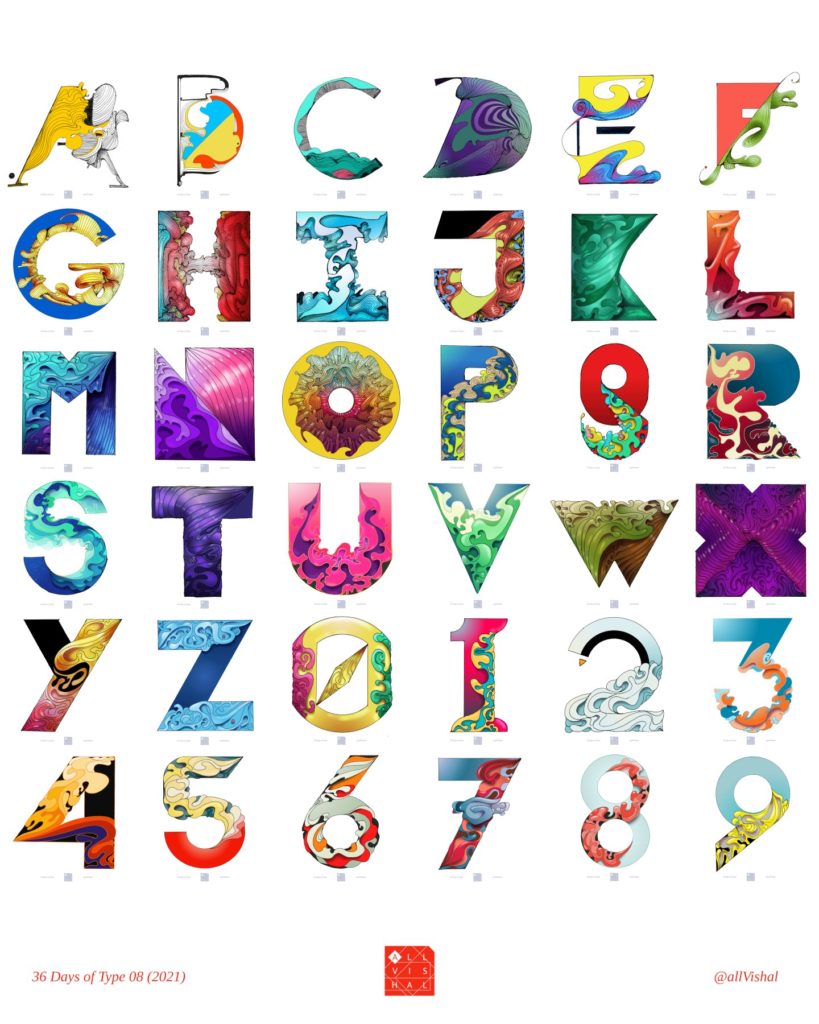
I probably wouldn’t have got past the first week if I hadn’t treated it as roughly. And finishing it in colour also owes something to Practice Makes Progress and Creatures, because just as it was starting I had also finally scanned up both books, and spent some time working out a quicker method of digital colour for myself, in Krita. I had done digital art before but always from scratch, to middling results. Colouring up existing drawings, and relatively rough drawings at that, brought new insights while also getting me past the blank canvas syndrome again. I still have dozens of pages to go, but even what I’ve done so far has been, in return on investment terms, twice as much as I’d ever hoped for. It’s been twice as fun.
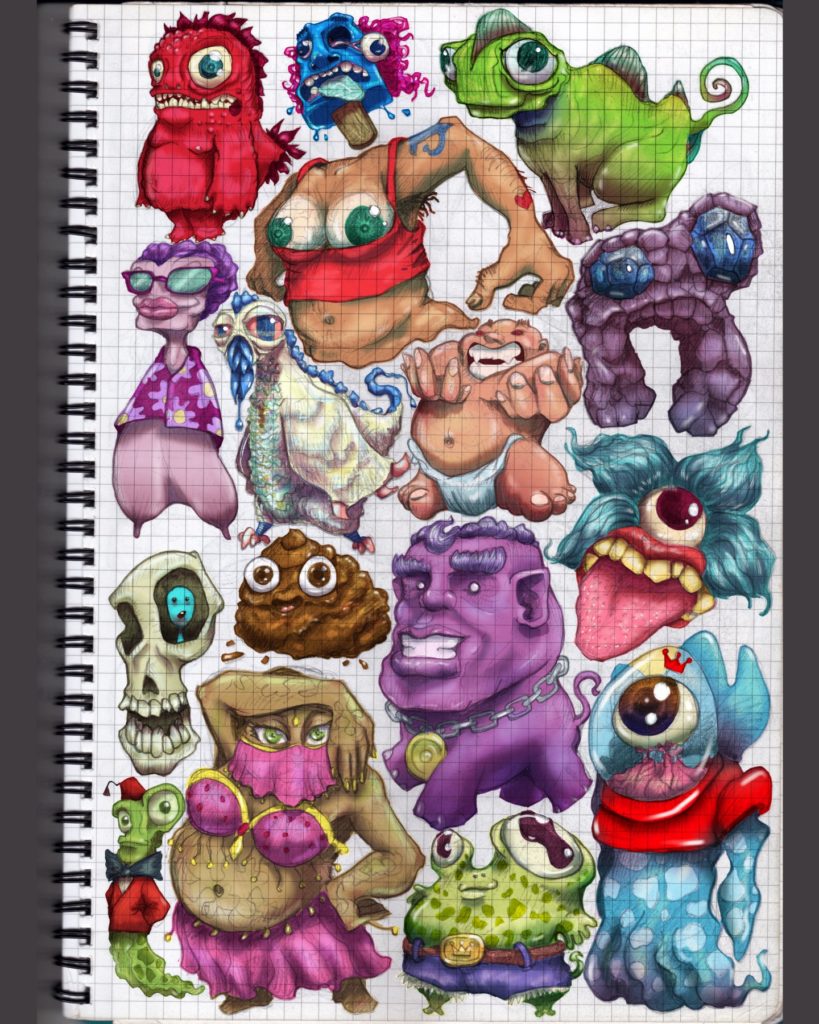
So what’s the big lesson here? Should you run out right now and get a bunch of sketchbooks?
If you can afford some, sure.
Should you then plan out what you’d like to put in them, maybe put a label and pretentious title down on each and not put any drawings in them for six months and not care because they’re there whenever you need them and the mood strikes and the moon is in Mercury and it’s a Tuesday?
Yes.
Should you shun all this navel-gazing-masquerading-as-advice and return to your stoic existence of only drawing on the most rough of packing paper using a stylus, while also employing said paper for toilet wipes because all existence is pain and transient and all art is suffering and who are you to think you’re better?
You do you and get that paper away from my face.
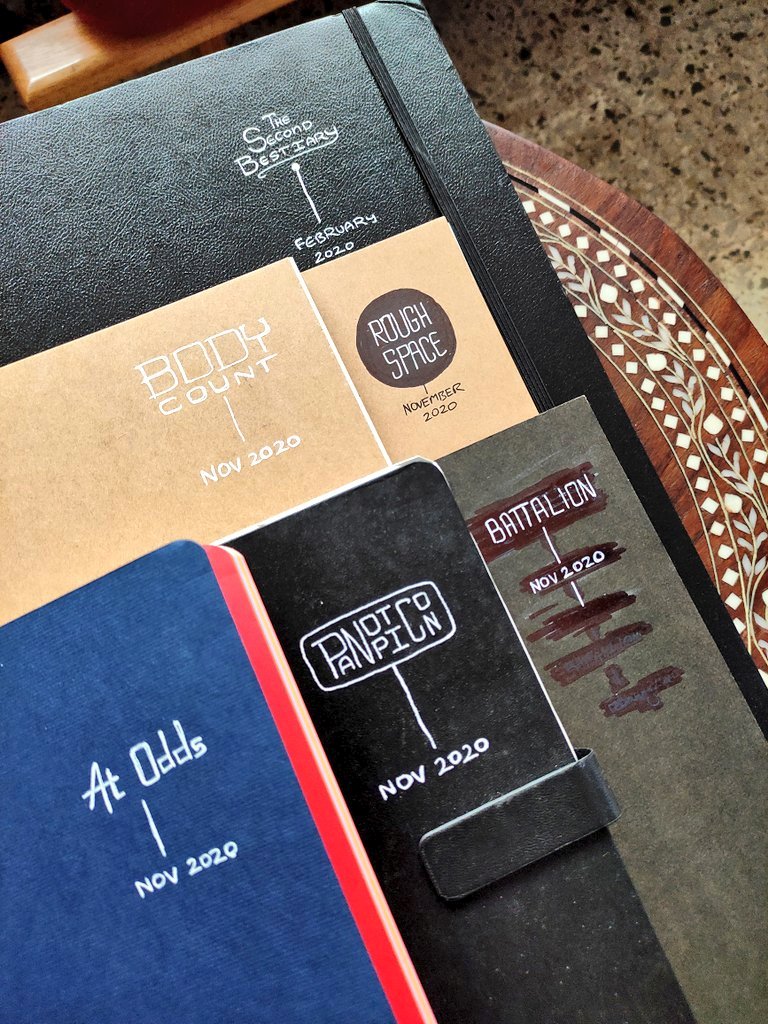
But spare a thought for the cheap sketchbook. Get one. Get three. Get a cheap pen or pencil or two. Keep them around. A nice space on the corner of a desk, away from the more important stuff, but always there. Stuffed in your backpack. A resting place for a coffee mug.
Maybe you won’t find the things in it that I did.
But you’ll find something of yourself.
V
